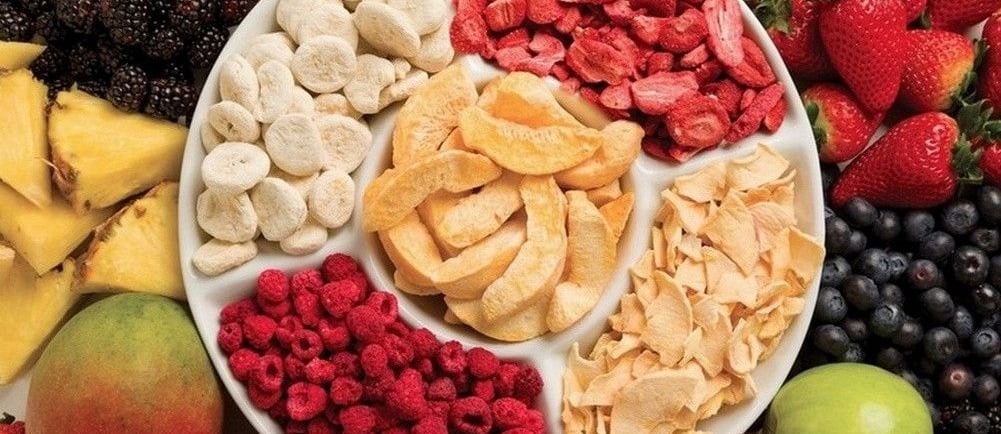Sustainable Freeze-Drying: A Key to a Circular Economy
Discover how sustainable freeze-drying transforms surplus food into valuable products, reducing waste and boosting Europe's circular economy.
BUSINESSFREEZE DRIED FRUITSHEALTHFREEZE DRYHERBFREEZE DRIED SNACKSFREEZE DRIED PRODUCTSENVIRONMENTECONOMICSFREEZE DRIED FOODSFREEZE DRYINGFREEZE-DRIED PRODUCT SUPPLIERSFOOD PRESERVATIONTECHNOLOGYPRODUCTIONTASTENUTRITIONFOOD WASTEEUROPE
8/14/20253 min read


Sustainable Freeze-Drying: A Key to a Circular Economy
In Europe, a continent committed to a circular economy, freeze-drying technology is emerging as a powerful tool for tackling a persistent problem: food waste. This innovative preservation method is transforming surplus produce that would otherwise be discarded into valuable, long-lasting products. By doing so, it's not only reducing waste but also creating new revenue streams and making the food system more resilient.
The Problem of Food Waste
The European Union generates an estimated 57 million tonnes of food waste annually, with households, food services, and manufacturing sectors being major contributors. This waste represents a significant economic loss and has a serious environmental impact, contributing to greenhouse gas emissions and the inefficient use of resources like water and land. The traditional "take-make-dispose" model is unsustainable, and a shift toward a circular economy, where resources are kept in use for as long as possible, is crucial. This is where freeze-drying technology offers a compelling solution.
How Freeze-Drying Works to Reduce Waste
Freeze-drying, or lyophilization, is a process that removes water from food by freezing it and then placing it in a vacuum. Under these low-pressure conditions, the frozen water sublimates—it turns directly from a solid (ice) into a gas (vapor) without passing through a liquid phase. This gentle process is key to its effectiveness.
Unlike traditional dehydration methods that use high heat, freeze-drying preserves the food's sensory and nutritional qualities, including its original color, flavor, texture, and up to 99% of its nutrients. Because the water is removed, the food becomes extremely lightweight and shelf-stable for years without the need for refrigeration or preservatives.
This technology is a game-changer for surplus produce. When farmers have an excess of fruits or vegetables due to overproduction, cosmetic imperfections, or seasonal peaks, they can be freeze-dried instead of being left to rot. Similarly, food manufacturers can process edible by-products, like fruit pomace (the pulp left after juicing), into new, valuable ingredients.
Creating a Circular Economy with New Products
Freeze-drying transforms waste into a diverse range of high-value products, thereby closing the loop and generating new economic opportunities.
* Snacks and Ingredients: Surplus strawberries, raspberries, and other fruits can be freeze-dried and packaged as healthy, ready-to-eat snacks. These crunchy, nutrient-rich products are also a popular ingredient for mueslis, granolas, and snack bars.
* Powders and Additives: The technology allows for the creation of powders from fruits, vegetables, and even coffee. These powders can be used as natural flavorings, food colorants, or functional ingredients in various products, from instant soups and smoothies to baked goods. For instance, freeze-dried fruit powders from surplus produce can be used to enrich yogurts or desserts, eliminating the need for artificial additives.
* Prepared Meals: The process is also used to create lightweight, long-lasting meals for outdoor enthusiasts, military personnel, and emergency food supplies. These meals only require the addition of water to be rehydrated and consumed, significantly extending their shelf life and reducing waste in the supply chain.
European Initiatives and Examples
Across Europe, companies are embracing this technology to drive sustainability. Businesses like Future Kitchens in Belgium are turning surplus fruits and vegetables into instant soups and smoothies, targeting companies with a healthy food option for their employees. This not only diverts food from landfills but also offers a convenient and nutritious product.
Another example is the use of freeze-drying for high-value by-products. In the wine industry, for instance, grape skins and seeds (pomace) are often a waste product. Innovative projects are now using freeze-drying to process this pomace into a fine powder rich in antioxidants and polyphenols. This powder can then be sold to the nutraceutical, cosmetic, or food industries as a functional ingredient, turning a waste stream into a profitable resource.
Economic and Environmental Benefits
Beyond waste reduction, the widespread adoption of freeze-drying brings several other benefits:
* Extended Shelf Life: Products can last for years, eliminating the pressure of short expiration dates for both retailers and consumers. This is a major factor in reducing household food waste.
* Reduced Transportation Costs: Since water is removed, the weight of the food is reduced by 70-90%. This makes transportation cheaper and more energy-efficient, lowering the carbon footprint associated with logistics.
* No Need for Cold Chains: Freeze-dried products are shelf-stable and don't require refrigerated storage or transport, which significantly reduces energy consumption and associated costs.
* Enhanced Profitability: Producers can utilize their entire harvest, including "ugly" or surplus produce, creating new revenue streams and greater economic stability.
By integrating freeze-drying into the food supply chain, Europe is not only working toward its ambitious food waste reduction targets but also fostering a more resilient, sustainable, and circular economy. This technology demonstrates how innovation can turn a problem into an opportunity, creating value from what was once considered waste.
Quality
Premium freeze-dried products for healthy snacks and long-term storage.
Innovation
Sustainability
© 2024. All rights reserved.
